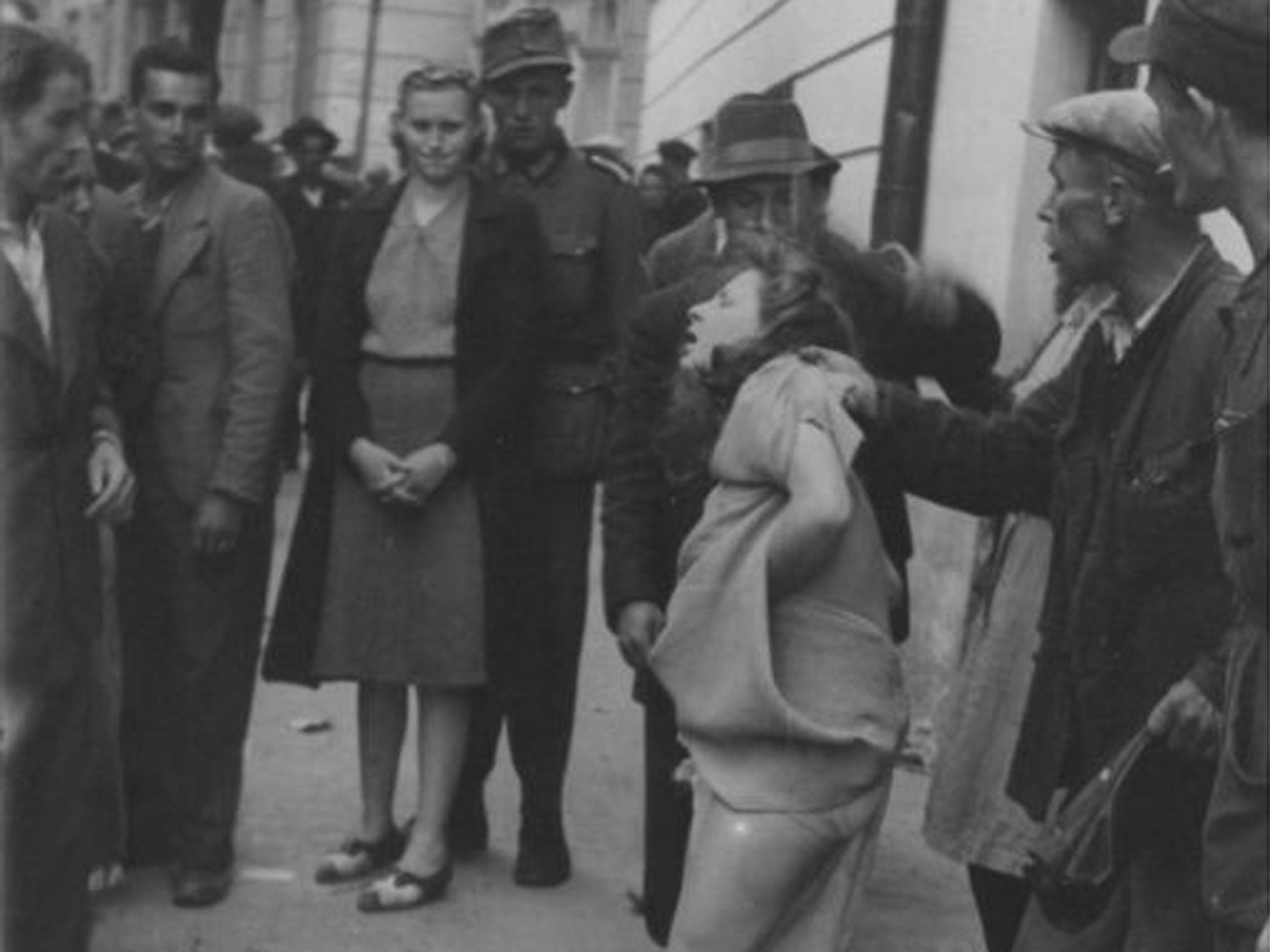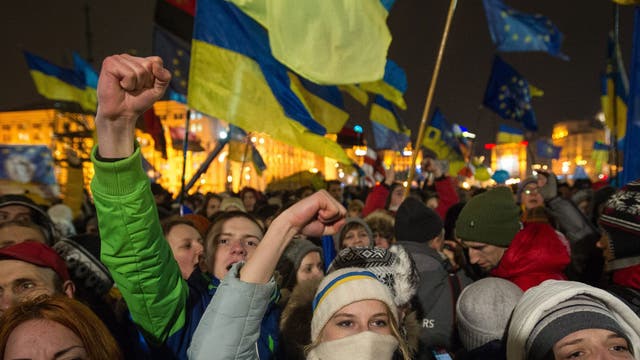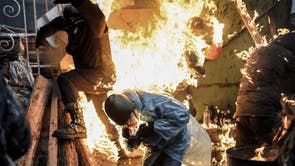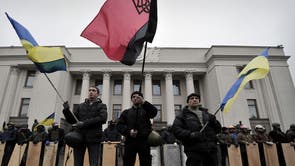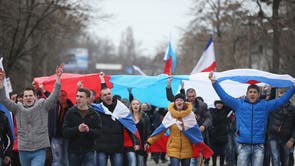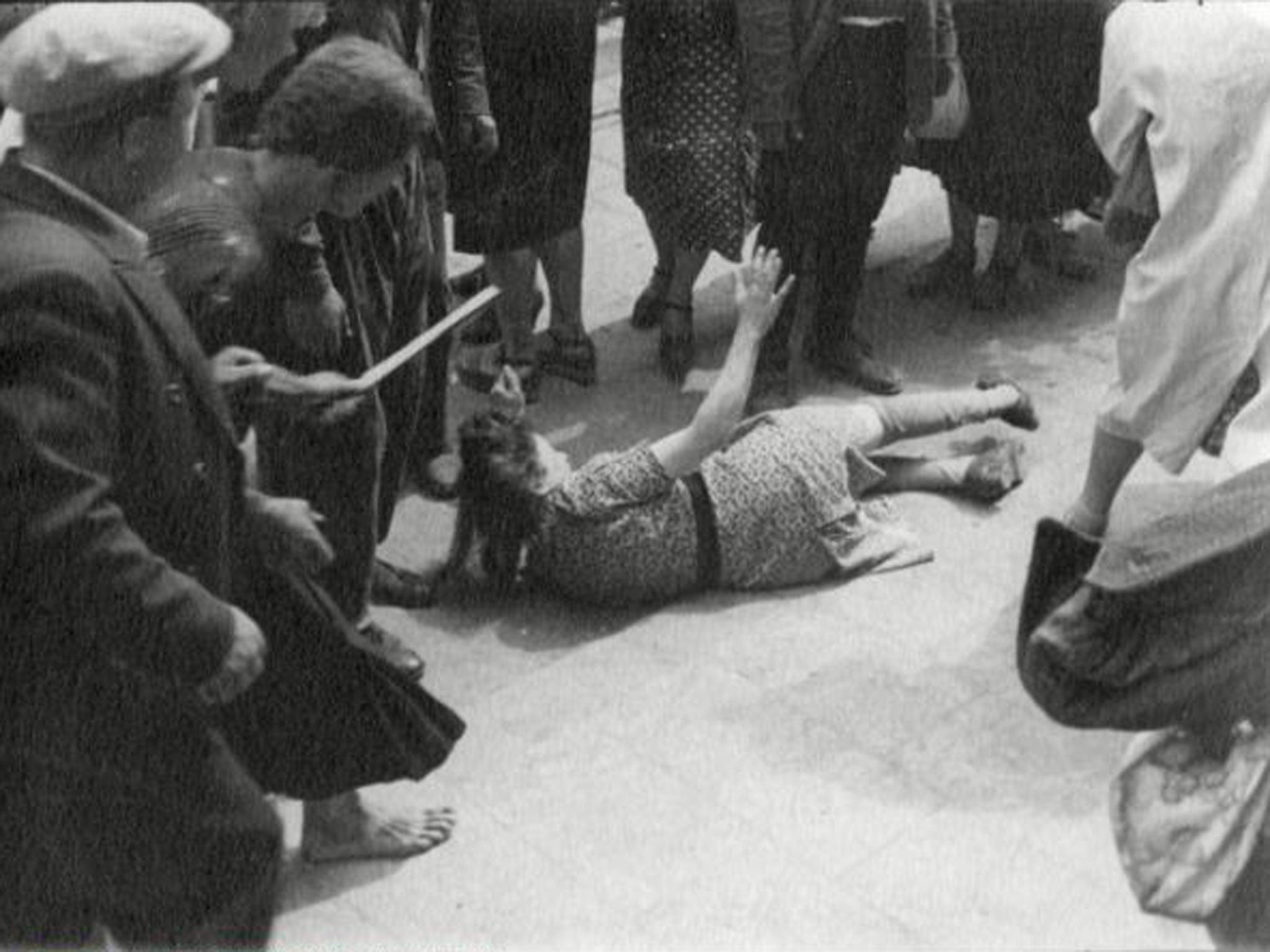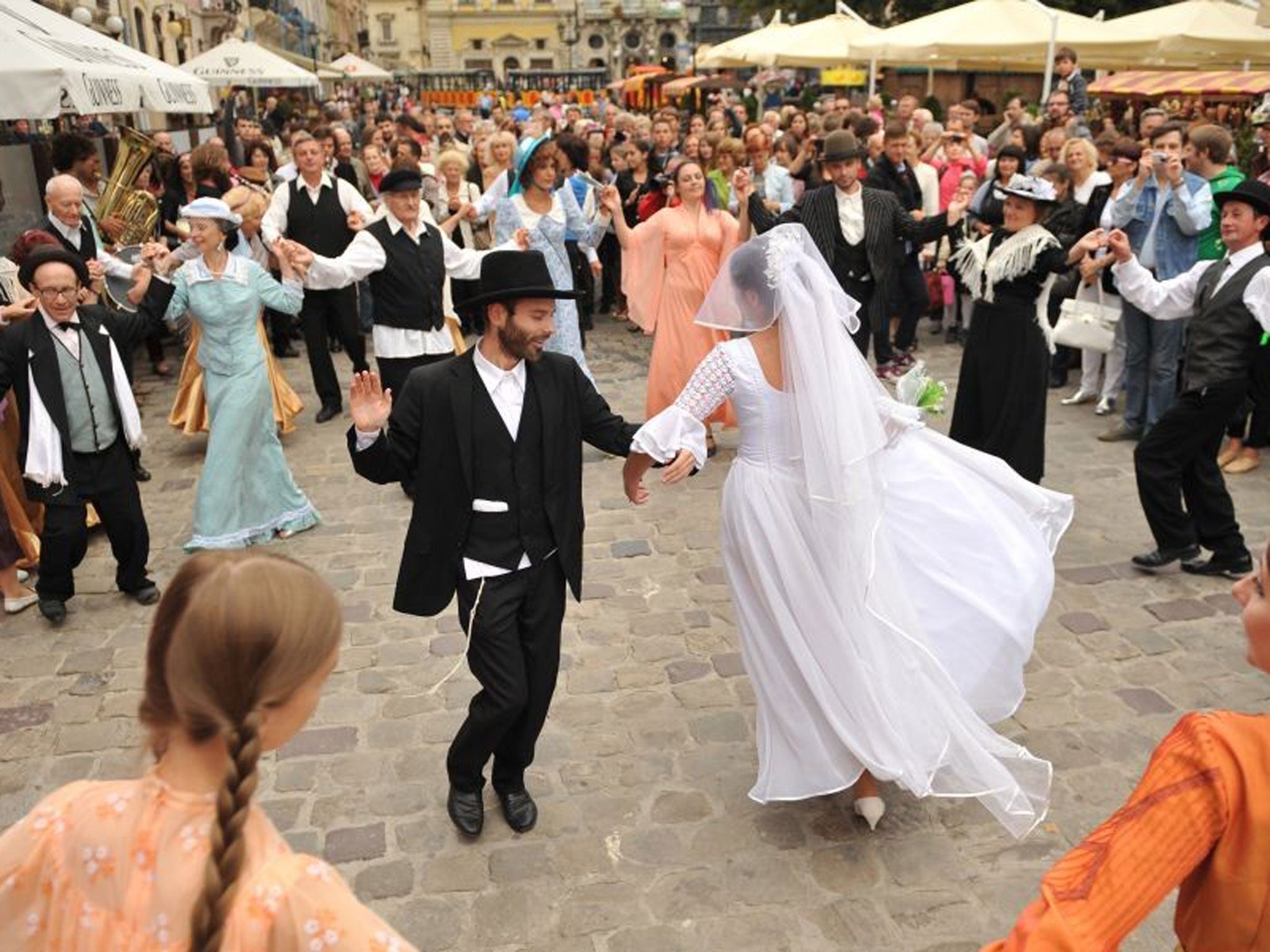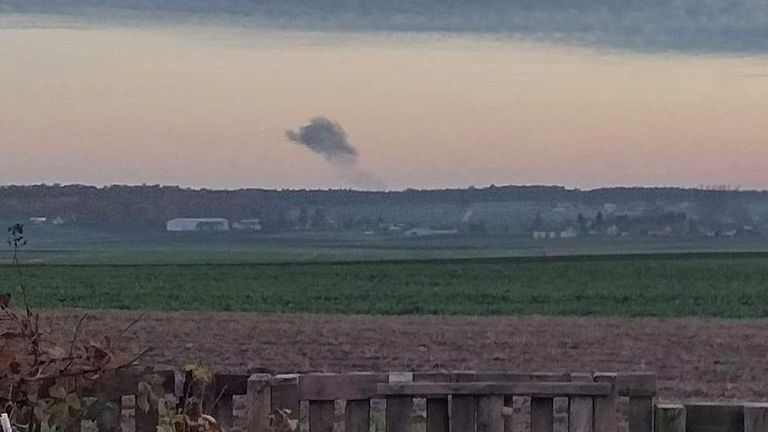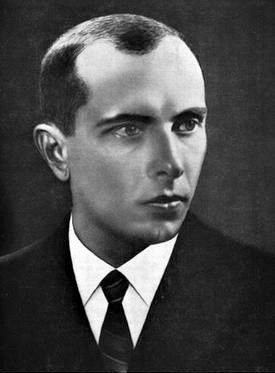
Bandera was born on 1 January 1909 in the village of Staryi Uhryniv in the Kalush Raion in what then was Eastern Galicia. He was the son of the local Greek Catholic parish priest Andriy Bandera (1882–1941) and his wife Myroslava née Głodzińska, daughter of a Greek Catholic priest.
His mother’s family was involved in the Ukrainian independence movement, and his father Andriy played a role in the establishment of the authorities of the West Ukrainian People's Republic in 1918–1919 and served as a chaplain in the Ukrainian Galicia Army, which fought with the Poles. He was murdered by the NKVD in Kiev on 10 July 1941.
"You will not hesitate to commit even the greatest crime…"
Young Stepan grew up in a patriotic atmosphere, surrounded by the spirit of the struggle for the independent Ukrainian state. From 1919 to 1927 he attended secondary school in Stryi (Stryj), where he became involved with Ukrainian youth organisations, including the Plast scouting organisation and the Sokil (Сокіл) gymnastics society. In 1928, he started studying at the Faculty of Agriculture and Forestry of the Lviv Polytechnic – he managed to complete his studies, but he was unable to defend his thesis due to his clandestine activities and arrests related to them.
In 1927, young Stepan joined the clandestine Ukrainian Military Organisation (UWO), and just two years later he was a member of the illegal Organisation of Ukrainian Nationalists (OUN). According to his friends’ accounts, Bandera was a fanatical, uncompromising nationalist from an early age, as he publicly scorned students who did not want to be involved with the nationalist movement. In spite of the fact that he considered himself a religious person, he made the nation his God – and like many other Ukrainian nationalists, he combined extremism with religion and used religion in order to further the sacralisation of politics and violence.
In its ideology, OUN assumed the principle of a ruthless and incessant fight against all the invaders of the Ukrainian territories, with no regard for losses – using every means necessary. The so-called Decalogue of a Ukrainian Nationalist, which was published in 1929, contains some particularly shocking commandments, including:
7. You will not hesitate to commit even the greatest crime, if the good of the cause demands it.
8. With hatred and deceit you will treat the enemies of your nation.
Nationalists were scared to death of any compromise and improvement of Polish-Ukrainian relations, as they believed in the theory of a ‘permanent revolution’, according to which violence was to be used to destabilise the situation in the territories inhabited by Ukrainians, thus maintaining a state of constant tension and unrest. The goal they set for themselves was to bring about a ‘national revolution’ resulting in ‘total removal of all invaders from Ukrainian lands’.
"...not hundreds, but millions of victims have to be sacrificed…"
Since joining the OUN, Bandera has rapidly risen through its ranks – partly due to his skills as an organiser and his knack for clandestine operations, and partly as a result of a generational change that took place within the organisation, which saw older and more moderate activists gradually replaced by young radicals. In 1931, Bandera became the head of the propaganda department, and two years later he was appointed the head (providnyk) of OUN’s National Executive. He pushed the activity of the organisation towards individual terror against the representatives of Polish authorities and against Ukrainians who were believed to collaborate with enemies. He personally selected assassins from among prospective candidates and made detailed preparations for the assassinations.
On 15 June 1934, his men carried out a daring assassination of the Polish Minister of Internal Affairs, Bronisław Pieracki. The swift reaction of the Polish authorities entailed mass arrests of OUN members as well as the establishment of a detention camp in Bereza Kartuska – a prison for political opponents of the ruling party. On 25 July 1934 the principal of the Ukrainian secondary school in Lviv, Ivan Babiy, a former UHA officer and a great Ukrainian patriot, was murdered for preventing OUN propaganda from being spread on school grounds, as he wanted to protect the students and the school from police reprisals. Bandera considered it to be treason.
The Greek Catholic Metropolitan of Lviv Andrey Sheptytsky spoke out after Babiy's murder, condemning the activities of Ukrainian terrorists as amoral; however, in the eyes of young radicals, Stepan Bandera – the leader of the assassins, who was arrested by Poles – started turning into a hero. This could be attributed in part to the reports of his steadfast attitude during two trials in Warsaw and Lviv, which saw him sentenced to death – at a later date, the sentence was changed to life imprisonment. His fanaticism is best described by the words he himself used in his final speech during the Lviv trial:
our idea in our understanding is so grand, that when we talk about its realization, not single individuals, nor hundreds, but millions of victims have to be sacrificed in order to realise it.
Bandera’s way with words, unpredictable temperament, fanatical determination and his devotion to the ‘sacred nationalist cause’ all contributed to the growing cult of personality.
Bandera served his sentence in Polish prisons in Święty Krzyż, Rawicz, Wronki and in the Bereza Kartuska camp. Before the outbreak of World War II, he was moved to the prison in Brest, from where he was released on 13 September 1939 – after which he made an attempt to seize power in the OUN. Several months later, in 1940, the organisation split into two factions – one led by Andriy Melnyk (OUN-M) and the other led by Bandera (OUN-B).
"Our rule will be terrible for our opponents"
There are ongoing disputes among historians about the OUN's links with fascism and Nazism – they are often denied, but the facts speak for themselves. Many accounts say that young Ukrainian nationalists were fascinated by fascism, going as far as to admire Mussolini and Hitler. The organisation was partially funded by Nazi Germany and its members carried out espionage missions for the Nazis. At a congress of Ukrainian nationalists, held in Krakow in April 1941, the attendees officially adopted numerous fascist principles, symbols and rituals. These included the principle of ‘One nation, one party, one leader’, the black-and-red flag symbolising blood and soil, and the fascist salute, which became a greeting. In addition to that, both the ideology and the actions of OUN included some anti-Semitic themes.
Bandera was gearing up for a ‘Ukrainian national revolution’ and the establishment of the Ukrainian state allied with Germany – In May 1941, he and his associates drafted the document titled The Fight and Wartime Activity of OUN, which envisioned the neutralisation of hostile elements in Ukrainian lands,
Our rule will be terrible for our opponents. Terror for enemy aliens and our traitors.
The followers of Bandera formed their units alongside the Wehrmacht and established special marching groups to take over territories captured after the German attack on the Soviet Union and which organised and enacted numerous pogroms against Jews in Western Ukraine. The Lviv pogrom saw one slogan repeated throughout the city:
Long live Adolf Hitler and Stepan Bandera – death to the Jews and the Communists.
"…formed in a spirit similar to National Socialist ideas…"
On 30 June 1941, in Wehrmacht-occupied Lviv, the followers of Bandera proclaimed an independent Ukrainian state with a new government headed by Yaroslav Stetsko and Bandera as the head of state. Contrary to expectations, the Germans did not recognise this proclamation and instead started arresting members of OUN-B. From July 1941, Bandera was under house arrest in Berlin. At the end of the year he was sent to the Sachsenhausen concentration camp, where he was imprisoned in a cell block for special prisoners – the so-called Zellenbau, which was isolated from the rest of the camp. There, he had a tworoom cell with a guest room, a bedroom furnished like a normal apartment and ate his meals in the SS dining room. What is more, he did not have to wear the prisoner’s garb, nor was he forced to work. He was allowed to contact his wife and communicate with the outside world.
Bandera tried to reach an agreement with the Germans on their support for Ukrainian independence aspirations. In December 1941, he wrote to Alfred Rosenberg, the Reich Minister for the Occupied Eastern Territories – in his letter, he offered cooperation and stated that Ukrainian nationalists were predisposed to help the Nazis because they had been ‘formed in a spirit similar to National Socialist ideas’. In the meantime, the Germans managed to secure more convenient and complacent partners for cooperation, including Volodymyr Kubijovyč and his Ukrainian Central Committee. In the meantime, in the absence of their leader, his followers carried on with the ‘Ukrainian national revolution’ he had planned – using mass violence against enemies of the nation. They went as far as to murder activists of the OUN-M faction headed by Andriy Melnyk, as well as kidnapping and murdering the wife of their political rival, Taras Bulba-Borovets.
They also stole the name of his armed organisation – the Ukrainian Insurgent Army. In the spring of 1943, they launched the genocidal anti-Polish OUN-UPA campaign in Volhynia, following the decision concerning the mass murders of Poles made by Dmytro Klyachkivsky, also known as Klym Savur, the leader of the Volhynia branch of OUN-B. Later the Central Provid of OUN-B approved the anti-Polish actions carried out by Savur. UPA Commander-in-Chief Roman Shukhevych adopted similar methods for cleansing the lands of Eastern Galicia of Poles. It is highly probable that Bandera was secretly keeping in touch with the leadership of the OUN-B and the Ukrainian Insurgent Army; however, the extent of the information he had about the campaign remains unknown. His personal responsibility for the murders of Poles was undoubtedly very limited or even non-existent, but he bears full moral responsibility – the atrocities took place as a result of the ‘national revolution’ he had planned, and he never condemned the events of that time.
‘An indomitable spirit in the service of the national idea’
On 27 September 1944, Bandera was released from KL Sachsenhausen under an informal agreement with the Ukrainian Insurgent Army to ensure their sabotage and intelligence cooperation against the Soviets. He was offered an opportunity to reform the OUN and establish military structures along with a political organisation with the broadest possible political representation – the Ukrainian Supreme Liberation Council, or UHVR for short. After the surrender of the Third Reich, Bandera moved to Munich, where he lived in the American occupation zone under the fake name of Stefan Popel. He had never changed his views – instead, he simply adapted them to the realities of the Cold War so that he could work with the British and American intelligence services. He never condemned or even admitted that the OUN and UPA committed crimes during World War II. From 1949 on, he collaborated with MI6 – the British intelligence service, which used Bandera to send spies to the Soviet Union.
Following an attempt to regain full control of the Ukrainian nationalist movement in exile, he found himself in a conflict with other activists who were hesitant to accept his rule as a dictator. The year 1948 saw another split in the OUN, as both factions tried to maintain contact with the country, where the remnants of the Ukrainian Insurgent Army fought against the Soviets.
Soviet agents made several attempts at killing or kidnapping Bandera – eventually, the assassination attempt carried out by KGB agent Bohdan Stashynsky on 15 October 1959 was a success – he managed to take his life using a special cyanide spray gun hidden in a rolled-up newspaper. Bandera was found dead in the stairwell of his home in Munich.
Bandera's assassination made him a martyr for the national cause, reinforcing his image as a fighter for a free Ukraine, despite his terrorist past. In 2010, Ukrainian President Viktor Yushchenko posthumously awarded Bandera the title of Hero of Ukraine.
For indomitable spirit in the service of the national idea, heroism and sacrifice in the struggle for an independent Ukrainian state.
The decree was eventually overturned by the court. In western Ukraine, Bandera is considered a hero of the national liberation movement.
Mirosław Szumiło, PhD, DSc
Степан Бандера – вождь Організації Українських Націоналістів
Він спрямував діяльність ОУН на індивідуальний терор проти польської влади та українців, яких вважав колабораціоністами поляків. На Західній Україні Бандера вважається героєм національно-визвольного руху.
Народився 1 січня 1909 р. у селі Старий Угринів поблизу Калуша, у Східній Галичині. Він був сином місцевого священика Андрія Бандери (1882-1941) та Мирослави Бандери, дівоче прізвище Ґлодзінська, яка була донькою греко-католицького священика.
Сім’я матері була залучена до української незалежницької діяльності. Батько Степана, Андрій, у 1918–1919 роках брав участь в утворенні керівних органів Західноукраїнської Народної Республіки. Він також був капеланом Української Галицької Армії, що воювала проти поляків. 10 липня 1941 р. Андрія Бандеру вбили співробітники органів НКВС у Києві.
"Не завагаєшся виконати найнебезпечнішого чину..."
Отже, юний Степан зростав у патріотично налаштованому оточенні, у дусі боротьби за українську державу. У 1919–1927 роках він навчався в гімназії у Стрию, був членом українських молодіжних організацій, таких як скаутська організація «Пласт» та українське спортивне товариство «Сокіл». Від 1928 р. навчався на факультеті сільського господарства та лісництва Львівської політехніки. Закінчив навчання, але з приводу своєї діяльності у підпіллі та перебування під арештом не захистив диплому.
Вже у 1927 р. став членом підпільної Української Військової Організації (УВО), від 1929 р. був також членом нелегальної Організації Українських Націоналістів (ОУН). Його друзі згадували, що Бандера – від ранньої молодості – був фанатичним націоналістом, а однією з рис його характеру була безкомпромісність. Він публічно гордував учнями та студентами, які не брали участь у націоналістичному русі. Вважав себе віруючою особою, проте для нього на місці Бога був народ. Так як інші українські націоналісти, він поєднував екстремізм із релігією, використовуючи її до сакралізації політики та насильства.
Основою ідеології ОУН була беззастережна боротьба із усіма «загарбниками» українських земель – без огляду на втрати та із використанням усіх доступних методів. У Декалогу – «Десятьох заповідях українського націоналіста», датованому 1929 р. – ми знайдемо вражаючі за змістом заповіді:
7. Не завагаєшся виконати найнебезпечнішого чину, якщо цього вимагатиме добро справи.
8. Ненавистю і безоглядною боротьбою прийматимеш ворогів Твоєї Нації.
Якщо йдеться про будь-які компроміси та покращення польсько-українських відносин, націоналісти боялися їх немов вогню. Вони визнавали теорію «тотальної революції», де вживання насильства було інструментом для дестабілізації ситуації на теренах, де жили українці. Примус слугував підтримці постійного стану напруженості та неспокою. Остаточною метою націоналістів була «національна революція», що передбачала «повне усунення усіх загарбників з українських земель».
... не сотні, а мільйони жертв треба посвятити...
Відтоді, коли Бандера став членом ОУН, він почав дуже швидко просуватися вгору в ієрархії організації. Це сталося частково завдяки його організаторським та конспіраційним здібностям, цьому сприяло також те, що в організації відбувалася естафета поколінь. Старших діячів, які булипоміркованіші, поступово заміняли молоді радикали. У 1931 р. Бандера став керівником відділу з питань пропаганди, а у 1933 р. – вождем (провідником) Крайового проводу ОУН. Діяльність організації він спрямував на індивідуальний терор проти представників польської влади та українців, яких вважав колабораціоністами. Бандера особисто обирав вбивць серед потенційних кандидатів та проводив ретельну підготовку до терористичних актів.
Він публічно гордував учнями та студентами, які не брали участь у націоналістичному русі. Вважав себе віруючою особою, проте для нього на місці Бога був народ. Він поєднував еНа вбивство Бабія відреагував Львівський греко-католицький митрополит Андрій Шептицький. Він засудив діяльність українських терористів, визнавши її аморальною. Однак в очах молодих радикалів арештований польською владою провідник терористів Степан Бандера ставав великим героєм. Це було завдяки його незламній поведінці під час двох судових процесів: варшавського і львівського. Тоді його засудили до смертної кари, що була замінена на довічне ув’язнення. Фанатизм Бандери найкраще відображають слова, яких він вжив у кінцевій промові під час львівського судового процесукстремізм із релігією, використовуючи її до сакралізації політики та насильства.
15 червня 1934 р. його люди скоїли у Варшаві зухвалий терористичний акт проти міністра внутрішніх справ Броніслава Пєрацького. Польська влада відреагувала, проводячи масові арешти серед членів ОУН, а також утворюючи концентраційний табір у Березі Картузькій, куди потрапляли політичні вороги правлячого табору. 25 липня 1934 р. було вбито Івана Бабія, директора української гімназії у Львові, колишнього офіцера УГА, великого українського патріота. Він загинув через те, що не хотів дати дозвіл на проведення агітації ОУН у своїй школі, намагався вберегти учнів та школу від репресій з боку поліції. Для Бандери це була зрада.
На вбивство Бабія відреагував Львівський греко-католицький митрополит Андрій Шептицький. Він засудив діяльність українських терористів, визнавши її аморальною. Однак в очах молодих радикалів арештований польською владою провідник терористів Степан Бандера ставав великим героєм. Це було завдяки його незламній поведінці під час двох судових процесів: варшавського і львівського. Тоді його засудили до смертної кари, що була замінена на довічне ув’язнення. Фанатизм Бандери найкраще відображають слова, яких він вжив у кінцевій промові під час львівського судового процесу:
«наша ідея в нашому понятті є така величина, що коли йде про її реалізацію, то не одиниці, не сотні, а мільйони жертв треба посвятити».
Ораторський талант Бандери, непередбачуваний темперамент, фанатична рішучість та посвята «святій націоналістичній справі» спричинилися до процесу його харизматизації та формування – вже у той час – культу особи.
Бандера сидів у польських в’язницях, зокрема у тій, що знаходилася на горі Святий Хрест (поль. Święty Krzyż), у Равічі, Вронках та у таборі Береза Картузька. Перед початком Другої світової війни він потрапив до в’язниці у Бресті, з якої вийшов 13 вересня 1939 р. Тоді спробував захопити владу над ОУН. У 1940 р. в організації стався розкол на фракцію Андрія Мельника (ОУН-М) та фракцію Степана Бандери – бандерівців (ОУН-Б).
"Наша влада буде страшною для наших ворогів"
Історики сперечаються щодо того, чи ОУН була пов’язана із фашизмом та нацизмом. Часто такий зв’язок заперечується, але факти говорять самі за себе. У багатьох спогадах йдеться про те, що молоді українські націоналісти захоплювалися фашизмом, були у захваті від Муссоліні та Гітлера. Організація одержувала додаткове фінансування від нацистської Німеччини, а також виконувала для неї шпигунські завдання. У квітні 1941 р. на Конгресі українських націоналістів у Кракові офіційно було прийнято багато фашистських правил, символів та ритуалів. Зокрема, прийняли правило «Одна нація, одна партія, один вождь», ухвалили чорно-червоний прапор, що символізував кров і землю, а також фашистське привітання. Окрім цього, в ідеології та практиці ОУН були помітні расистські та антисемітські елементи.
Бандера готувався до «української національної революції» та утворення української держави поруч із Німеччиною. У травні 1941 r. Бандера разом із співпрацівниками підготував документ: Боротьба й діяльність ОУН під час війни . У ньому передбачалося «знешкодження» ворожих елементів на українських землях, а цими ворожими елементами вважалися: москалі, жиди і поляки. Діяли за принципом:
Наша влада буде страшною для наших ворогів. Терор для ворожих, чужих і наших зрадників.
Бандерівці – пліч-о-пліч із Вермахтом – утворили свої військові формування, а також спеціальні похідні групи. Після нападу Німеччини на Радянський Союз похідні групи повинні були брати владу на окупованих теренах у свої руки. Згадані групи організували багато єврейських погромів на Західній Україні. Під час погрому у Львові популяризували гасло:
Хай живе фюрер Адольф Гітлер і вождь Степан Бандера! Смерть жидам і комуністам.
"...Cформовані у дусі, що нагадує ідеї націонал-соціалізму..."
30 червня 1941 р. у Львові, що на той час був окупований Вермахтом, бандерівці проголосили Акт відновлення української державності. Ярослава Стецька було обрано Головою Українського Державного Правління та уповноважено сформувати уряд, Бандера мав стати главою держави. Однак, німці не визнали цих актів та почали арештовувати членів ОУН-Б. Від липня 1941 р. Бандера перебував під домашнім арештом у Берліні. Наприкінці цього ж року його було відправлено у концентраційний табір Заксенхаузен, де він утримувався у відокремленому від решти табору відділенні для спеціальних в’язнів під назвою Zellenbau («Целленбау»). У розпорядженні Бандери була двокімнатна камера, що складалася з вітальні та спальні, кімнати були обставлені, як звичайне помешкання. Він споживав їжу в їдальні СС, не був зобов’язаний носити тюремний одяг, його не примушували працювати. Бандері дозволили зв’язатися із дружиною, він міг також спілкуватися із зовнішнім світом.
Бандера намагався домовитися з німцями щодо підтримки ними українських національних устремлінь. В грудні 1941 р. він написав листа Альфредові Розенбергу, голові Міністерства окупованих східних територій. Пропонував йому співпрацю, стверджуючи, що українські націоналісти мають особливі риси, завдяки яким можуть допомагати нацистам, оскільки вони «сформовані у дусі, що нагадує ідеї націонал-соціалізму». Однак, німці знайшли більш зручних та слухняних партнерів для співпраці, таких як Володимир Кубійович та Український центральний комітет, що знаходився під його керівництвом. Бандерівці продовжували без Бандери заплановану ним «українську національну революцію», застосовуючи масове насильство щодо ворогів народу. Вони вбивали навіть діячів своїх конкурентів, тобто членів фракції мельниківців (ОУН-М). Бандерівці викрали та вбили дружину політичного конкурента – Тараса Боровця (псевд. «Бульба»).
Вони також «вкрали» назву збройного формування – Української Повстанської Армії. Навесні 1943 р. на Волині бандерівці розпочали антипольську акцію ОУН-УПА, що переросла у геноцид польського населення. Рішення про масові вбивства поляків прийняв Дмитро Клячківський (псевд. «Клим Савур»), керівник волинської ОУН-Б. Пізніше Центральний провід ОУН-Б схвалив антипольську діяльність «Клима Савура». Роман Шухевич, головний командир УПА, вирішив використати схожі методи під час «очищення» Східної Галичини від поляків. Ймовірно Бандера утримував таємний зв'язок із керівництвом ОУН-Б та УПА, однак ми не знаємо про те, чи ретельно його інформували про цю акцію. Безсумнівно, рівень його особистої відповідальності за геноцид поляків був дуже незначний чи навіть жодний, але Бандера несе за нього повну моральну відповідальність. Це у рамках запланованої ним «національної революції» був скоєний злочин геноциду, якого він ніколи не засудив.
„Незламний дух служіння національній ідеї”
27 вересня 1944 року німці звільнили Бандеру із Заксенхаузен. Це сталося на основі неформальної домовленості з УПА про диверсійно-розвідницьку діяльність проти Совітів. Бандері запропонували реорганізувати ОУН та створити військові структури, а також політичну організацію. Її основою мала бути Українська головна визвольна рада (УГВР). Після капітуляції Третього Рейху Бандера оселився у Мюнхені, на території американської окупаційної зони, під фальшивим ім’ям та прізвищем – Штефан Попель. Він не змінив своїх політичних поглядів, але прилаштував їх до дійсності «холодної війни», щоб мати можливість співпрацювати із розвідкою Великобританії та Сполучених Штатів. Він ніколи не засудив злочинів ОУН-УПА і навіть не визнав, що ці організації скоїли будь-які злочини під час Другої світової війни. Від 1949 р. співпрацював із британською розвідкою MI6. Використовуючи зв’язки із Бандерою, англійці перекидали агентів на територію Радянського Союзу.
Намагаючись повернути собі повну владу над українським націоналістичним рухом в еміграції, Бандера потрапив у ситуацію гострого конфлікту з іншими діячами, які не бажали приймати його диктаторські замашки. У 1948 р. в ОУН стався черговий розкол. Обидві фракції старалися утримувати зв'язок з Україною, де проти Совітів боролися недобитки УПА.
Совітські спецслужби декілька разів пробували вбити або викрасти Степана Бандеру. Вдався лише терористичний акт, який 15 жовтня 1959 р. виконав агент КДБ Богдан Сташинський. Він використав для вбивства спеціальний пістолет, що розпиляв розчин ціаністого калію, а сам пістолет був у газеті, що Сташинський згорнув у рулон. Мертвого Бандеру було знайдено на сходовій клітці мюнхенського будинку, у якому проживав Бандера.
Смерть Бандери – в результаті терористичного акту – вчинила з нього мученика за національну ідею. Це також посилило сприйняття Бандери як борця за вільну Україну – попри його терористичне минуле. У 2010 р. Президент України Віктор Ющенко присвоїв Бандері звання Героя України (посмертно).
за незламність духу у відстоювання національної ідеї, виявлені героїзм і самопожертву в боротьбі за незалежну Українську державу.
Суд визнав недійсним Указ Президента України Віктора Ющенка. На Західній Україні Бандера вважається героєм національно-визвольного руху.

